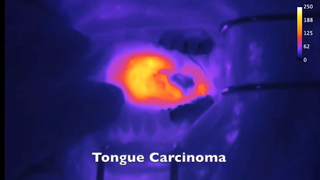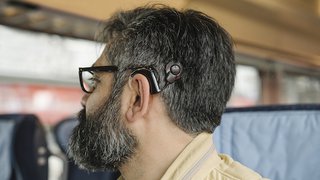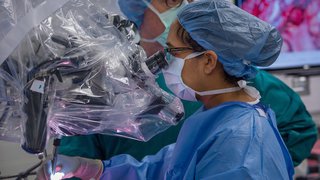
The sound of your voice is an important part of what makes you who you are. Through voice use, humans connect with one another and navigate the world. So when the voice begins to sound tight, whispery, or broken due to a rare neurologic voice disorder called spasmodic dysphonia (SD), it can be challenging to adapt.
This can be especially true for people who make their living with their voice, like attorney and politician Robert F. Kennedy Jr. and former NPR radio host and podcaster Diane Rehm, both of whom have been public about their SD diagnoses.
About 50,000 people in North America have SD, also known as laryngeal dystonia, but many more cases likely go undiagnosed. It affects more women than men, with voice changes usually appearing between the ages of 30 and 50. They may start gradually or develop suddenly and do not go away.
Spasmodic dysphonia was once believed to be a symptom of hysteria or post-traumatic stress disorder. But it is actually classified as a laryngeal dystonia, which is a type of neurological movement disorder involving the voice box. SD causes the vocal cord muscles of the voice box (larynx) to spasm, cutting off the voice or dissolving it to a brief whisper mid-sentence.
SD is not painful and only affects conversational speech, meaning many patients can still laugh, whisper, or sing normally. Researchers suspect this is because SD disturbs the portion of the brain responsible for learned speech. Patients with SD may feel isolated, as the condition limits their ability to connect with others and can undermine their self-confidence.
Because of the limited understanding of SD, some patients may see many doctors before getting a definitive diagnosis. Specialists at UT Southwestern's Voice Center are adept at diagnosing and treating SD. While there's no cure for the disorder yet, our experts provide personalized voice therapy and procedures to help you sound more like yourself again.
About 50,000 in people in North America have been diagnosed with spasmodic dysphonia, including lawyer and political candidate Robert F. Kennedy Jr. and former NPR radio host Diane Rehm, both of whom have been public about their SD diagnoses.
How is spasmodic dysphonia diagnosed?
Ongoing research suggests SD is caused by abnormal functioning in the basal ganglia of the brain, which controls muscle movement. No specific SD-causing gene mutations have been identified. However, a mutation in a gene that causes other forms of dystonia may be associated. In some patients, SD may also have an environmental trigger, like a stressful event such as childbirth or a traumatic injury or major illness.
Changes in the brain do not alter the form or structure of the larynx. And SD can’t be diagnosed with an X-ray, MRI, or blood test. The Voice Center at UTSW offers advanced diagnostic technology that most community clinics don’t have.
Videostroboscopy is a technique that allows us to view a patient’s vocal cord movement in detail. A laryngologist passes a thin tube mounted with a tiny camera through the patient’s nose and into the throat. This is a painless exam where the patient is awake and engaged with our team.
Once the scope is in place, we ask the patient to say specific words and phrases that are known to be challenging for those with SD, such as words containing many vowels as these are known to be difficult in the most common form of SD. On a nearby computer monitor, the camera displays how the vocal cords move so the laryngologist and voice therapist can analyze the movement and sound in real time. Use of videostroboscopy can result in a more precise diagnosis, which can lead to better outcomes through a refined treatment plan.
Our multidisciplinary team of laryngologists and speech-language pathologists use the data to diagnose the specific type of SD:
- Adductor: This most common form of SD creates spasms that cause the vocal folds to move together, making it difficult to produce sounds. The voice can sound choppy, strained, or strangled.
- Abductor: Spasms keep the vocal folds apart, making the voice sound breathy and weak.
- Mixed: Very rare, this form includes features of both adductor and abductor SD.
In some patients, laryngeal tremor can accompany SD. This is a neurologic voice disorder characterized by regular motion of the entire voice box region. People with laryngeal tremor may sound like they are on the verge of tears. Treatment for laryngeal tremor (with or without SD) is similar to the treatment of SD.
Related reading: What to include in your ‘voice care lunchbox’ – and what to leave out
Treatment for SD symptoms
Speech therapy
In the Voice Center, our specialized voice therapists provide patients with speech therapy. Sessions include:
- Education about SD
- Strategies for professional voice users, such as teachers and lawyers
- Tips for voice control on the phone and in public speaking
- Suggestions to reduce vocal strain or vocal cord damage
Botox injections
Many of the hundreds of patients we see each year for SD get excellent results with botulinum toxin injections. UTSW offers this safe, effective treatment in the clinic — no anesthesia or sedation is required.

Guided by electromyography, our expert laryngologists deliver precise injections to weaken the nerve impulses that make the vocal cords contract. The procedure takes just a few minutes and provides about two to three months of relief from SD symptoms. This procedure is covered by most insurance providers.
Surgery
My colleague Ted Mau, Ph.D., M.D., performs a procedure that can help some people with SD for whom less invasive treatments are not optimal. In selective laryngeal adductor denervation-reinnervation (SLAD-R), the surgeon disconnects and reconnects a specific nerve pathway to stop vocal cord spasms.
Not all patients are ideal candidates for this procedure, as it depends on their vocal needs and clinical presentation.
Social support
Dysphonia International is a nonprofit organization founded in 1989 to improve the lives of people affected by SD and related conditions. We encourage patients to explore its resources, which include research, education, and support group connections.
The voice is a very personal thing and closely linked to our self-identity. While spasmodic dysphonia does not go away and there is not yet a cure, getting personalized treatment from a team of specialists at UT Southwestern can relieve your symptoms and help increase your confidence when using your voice.
To talk with a voice care expert, call 214-645-8300 or request an appointment online.











